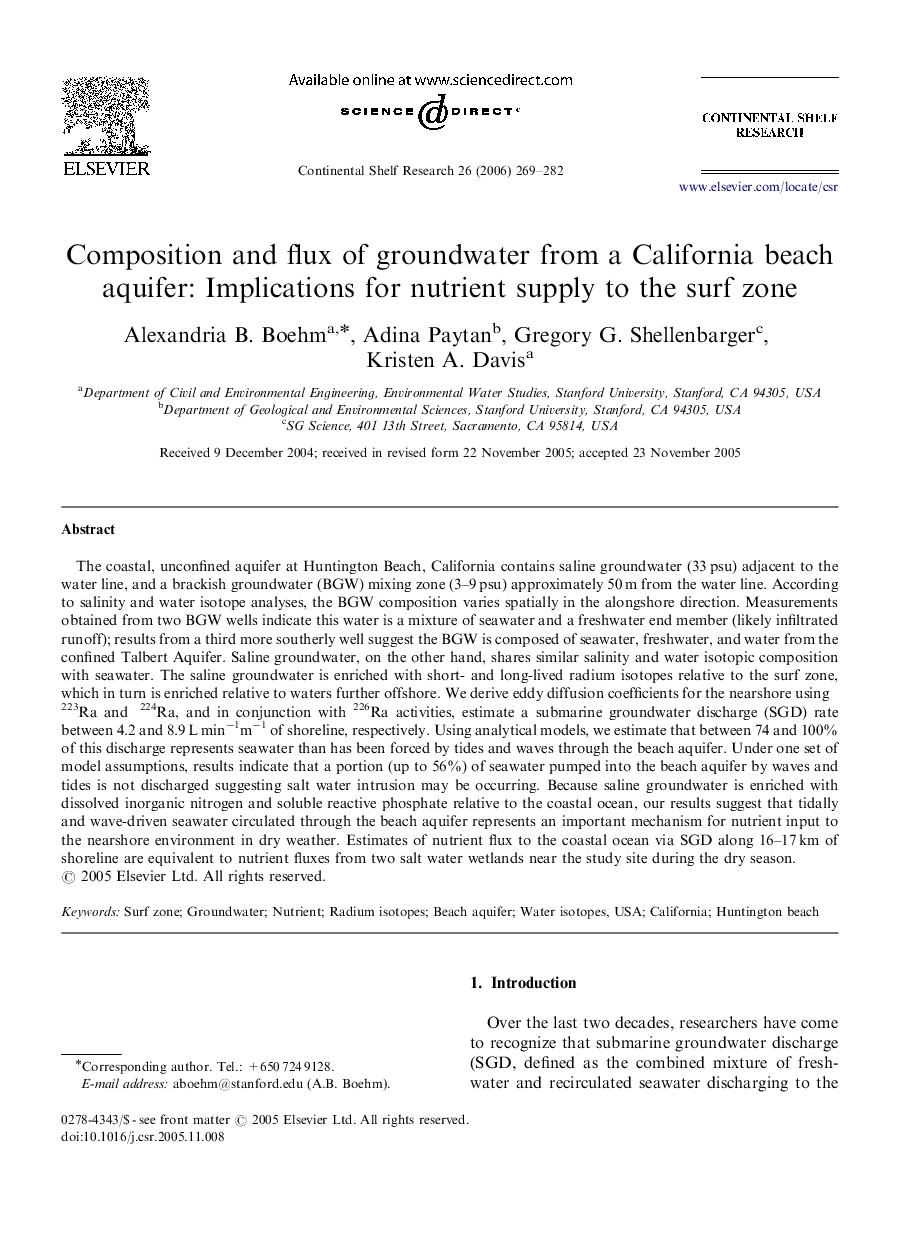| Article ID | Journal | Published Year | Pages | File Type |
|---|---|---|---|---|
| 4533710 | Continental Shelf Research | 2006 | 14 Pages |
Abstract
The coastal, unconfined aquifer at Huntington Beach, California contains saline groundwater (33Â psu) adjacent to the water line, and a brackish groundwater (BGW) mixing zone (3-9Â psu) approximately 50Â m from the water line. According to salinity and water isotope analyses, the BGW composition varies spatially in the alongshore direction. Measurements obtained from two BGW wells indicate this water is a mixture of seawater and a freshwater end member (likely infiltrated runoff); results from a third more southerly well suggest the BGW is composed of seawater, freshwater, and water from the confined Talbert Aquifer. Saline groundwater, on the other hand, shares similar salinity and water isotopic composition with seawater. The saline groundwater is enriched with short- and long-lived radium isotopes relative to the surf zone, which in turn is enriched relative to waters further offshore. We derive eddy diffusion coefficients for the nearshore using 223Ra and 224Ra, and in conjunction with 226Ra activities, estimate a submarine groundwater discharge (SGD) rate between 4.2 and 8.9Â LÂ minâ1mâ1 of shoreline, respectively. Using analytical models, we estimate that between 74 and 100% of this discharge represents seawater than has been forced by tides and waves through the beach aquifer. Under one set of model assumptions, results indicate that a portion (up to 56%) of seawater pumped into the beach aquifer by waves and tides is not discharged suggesting salt water intrusion may be occurring. Because saline groundwater is enriched with dissolved inorganic nitrogen and soluble reactive phosphate relative to the coastal ocean, our results suggest that tidally and wave-driven seawater circulated through the beach aquifer represents an important mechanism for nutrient input to the nearshore environment in dry weather. Estimates of nutrient flux to the coastal ocean via SGD along 16-17Â km of shoreline are equivalent to nutrient fluxes from two salt water wetlands near the study site during the dry season.
Related Topics
Physical Sciences and Engineering
Earth and Planetary Sciences
Geology
Authors
Alexandria B. Boehm, Adina Paytan, Gregory G. Shellenbarger, Kristen A. Davis,
